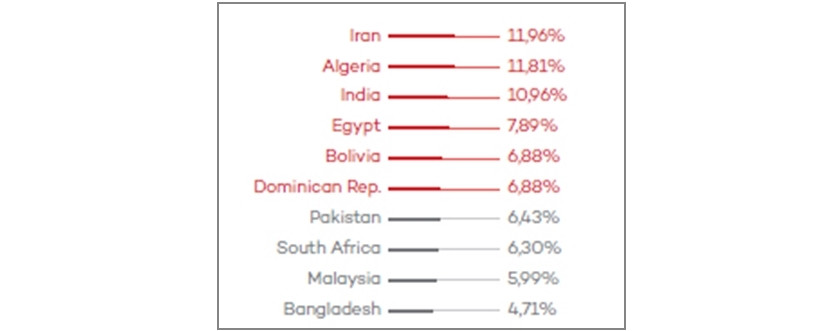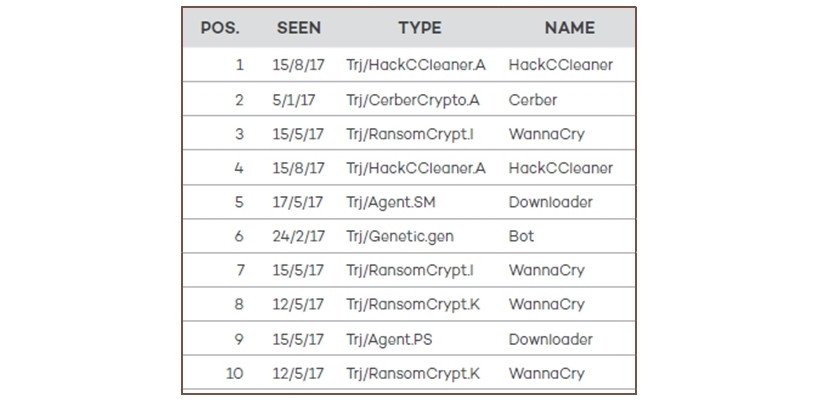This year, Panda Security saw more malware samples created each day than in the entire 20th century. The targets have changed, the techniques have become more sophisticated, the attack vectors have multiplied, and the tools are more precisely designed. Attackers are meticulously studying their victims to adapt their strategy and achieve the greatest possible impact.
Cyber attacks seen in 2017 highlight the efficiency, effectiveness and profitability of cyber criminals' efforts. Panda Security's malware research facility, PandaLabs, analysed 75 million new, distinct malware files from January 2017 to October 2017, translating to 285 000 samples every day.

Typically, African organisations believed they were immune to the kind of attacks faced in the rest of the world. However, the data from PandaLabs indicates African countries have indeed been the target of cyber crime - including Algeria, Egypt and South Africa, which all fall into the top 10 targeted regions.
Reflecting on Cybercrime in 2017
Cybersecurity events that occurred this year have proven that the traditional security model is not able to detect and prevent advanced threats. Hackers are constantly adapting malware variants to avoid detection - a major change we saw in 2017 is the removal of the human element as a success factor in cyber-attacks. Attacks can now react in real-time to the victims' network and adapt, without human interaction to achieve their goal.
* Stealth attacks with lateral movements have become common.
* Fileless attacks have become more prominent, and remain invisible to traditional protection models.
* Tool kits are increasingly being use to efficiently create new malware vectors.
* Cybercriminals are targeting Endpoints in response to Enterprise Mobility shifts.
* Large presence of organised cybercrime.
* Increased instances of cyberwarfare and cyber-crime.
Top Malware Samples in 2017
The number of malware samples seen in 2017 has increased exponentially. This is not only due to an actual increase in malware, but also due to the success of new techniques used by hackers - changing elements of previously developed malware, making it quicker and easier to create. Of over 75 000 new samples of malware analysed per day by PandaLabs, these were the top 10 malware samples.

Key Cybersecurity Prediction for 2018
1. Cyberwarfare is a reality we already face. What will change in 2018 is the likelihood of collateral damage from these attacks. The internet has no borders and attacks can spread across the world - affecting more than the original target.
2. Fileless attacks will become widely used by hackers to avoid detection.
3. Mobile devices will be targeted as hackers try take advantage of the vulnerabilities that surrounding the mobile workforce.
4. Cryptocurrencies such as Bitcoin are increasingly being used as a means of digital payment. These currencies will continue to increase in value and usability, and are likely to become targets for cybercriminals.
Global attacks like WannaCry and Petya, as well as the predictions we face going into 2018 highlight the importance of new generation technology to mitigate the risk of these advanced threats. Security based on detection and response in real time, with forensic reporting and details of how the attack occurred, is essential to avoiding future intrusions. Gartner Peer Insights endorses Panda Adaptive Defense, the leading EDR solution with the largest number of analyses on the entire market.
For more insights into the state of Cybersecurity download PandaLabs Annual Report.
Share
Editorial contacts